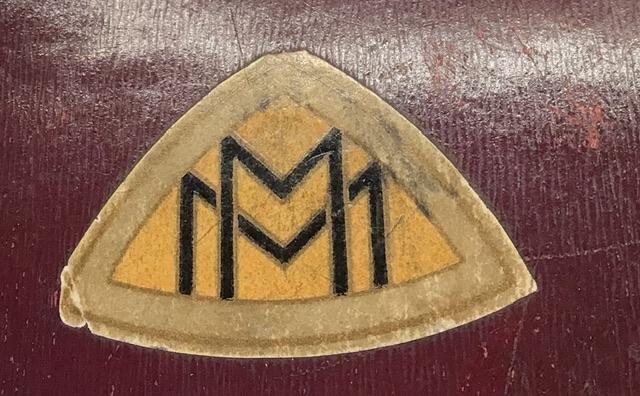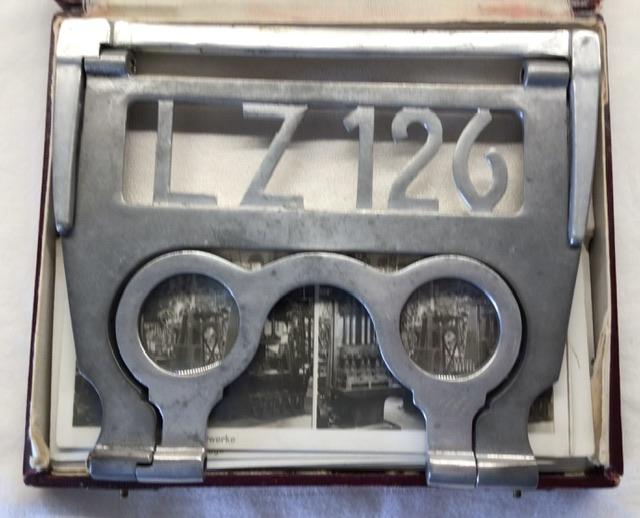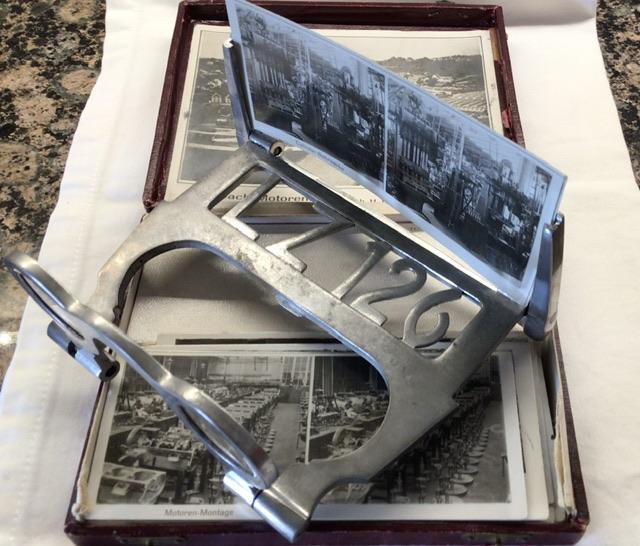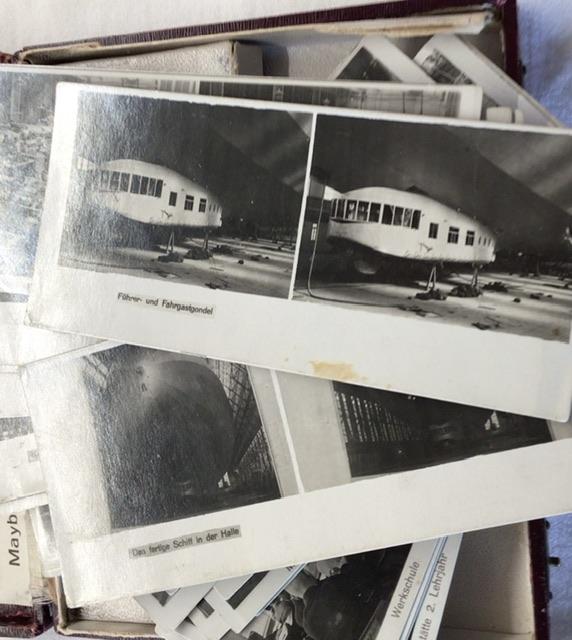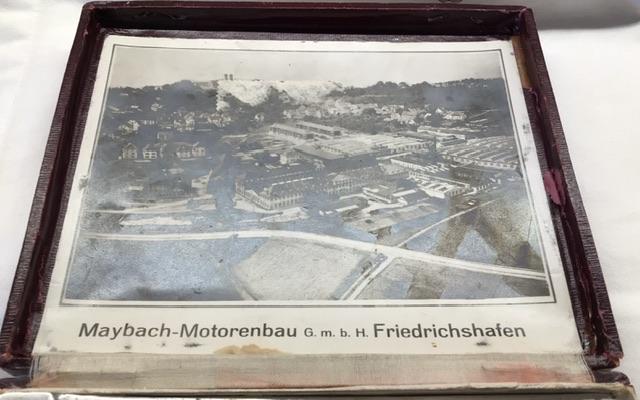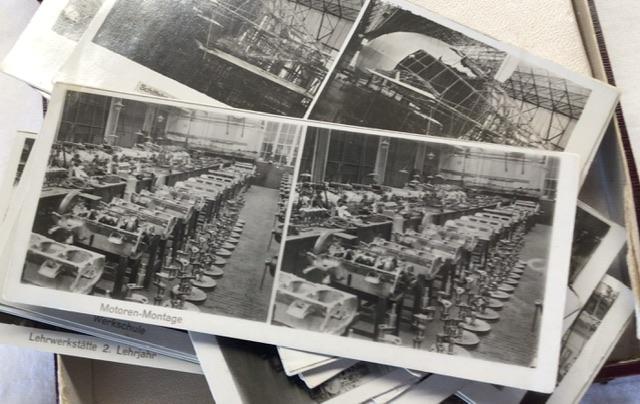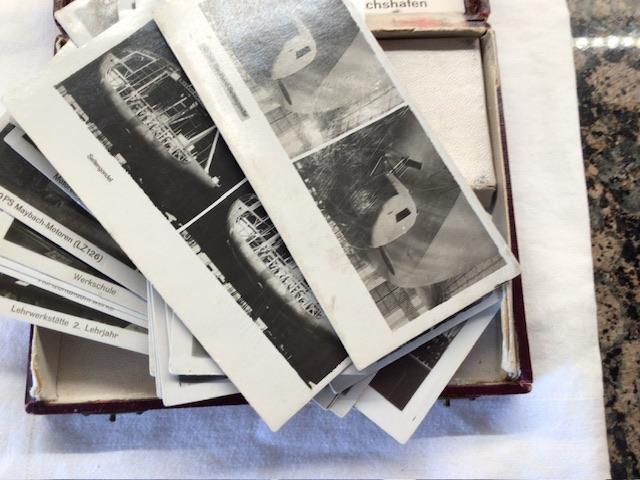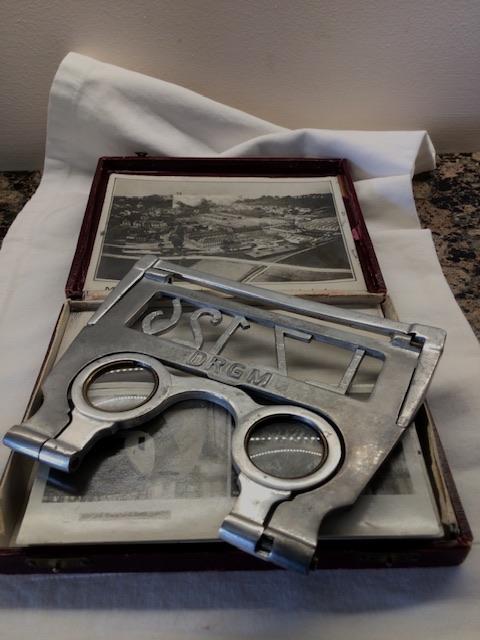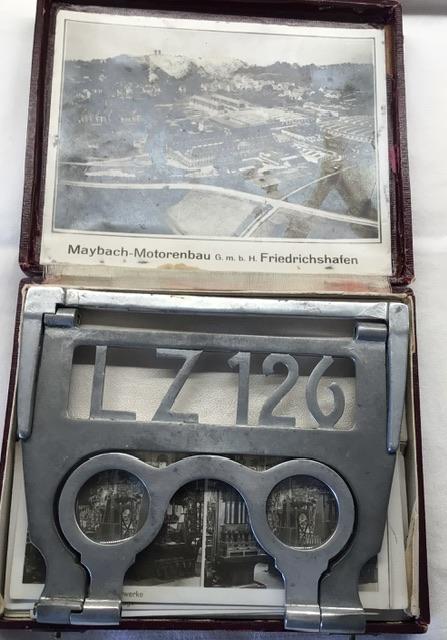ZEPPELIN INTEREST, MAYBACH STEREO VIEWER.
UNUSUAL CASED MAYBACH AIRSHIP RAUMBILD STEREO VIEWER AND 25 STEREOSCOPIC PHOTOGRAPHS.
VIEWER IN ALUMINIUM, WITH FRETTED LZ126 AND DRGM TO REVERSE.
EXCELLENT CONDITION, AND RARE SURVIVOR OF GERMANYS‘ EARLIEST PRE WAR FLYING EXPERIMENTS.
HISTORY BELOW.
After World War I the Allies forbade the Germans to build military airships. However, the USA ordered the Zeppelin factory to build an airship as a reparations payment. Officially it was intended for civil use. For that reason there was room for 30 passengers in the Zeppelin in addition to the crew. For the first time there was even also sleeping-room. In order to reflect the sunlight and decrease the heating-up of the lifting gas, the LZ 126 was given a surface coating of aluminium particles. In that way the whole body of the airship appeared more elegant. The airship was driven by five Maybach twelve-cylinder engines with a total of 2,100 HP.
The delivery flight of the LZ 126 to the USA took place in October 1924. Before the start, something happened: two reporters hid in the tail as stowaways, but they were discovered in time. In 81 hours the airship covered a distance of 8,050 kilometres. The journey caused a great sensation and acted as a peace mission. The crew was even given a reception in the White House. The LZ 126 was given the name "USS Los Angeles" and the new type designation ZR-3, the American designation for a Zeppelin rigid airship. Upon its entry into service, the Americans switched from hydrogen to helium. Helium was safer, but also scarce and expensive, and for that reason, another US-Navy airship had to be emptied and the gas transferred into the "USS Los Angeles". The Zeppelin was used as a training and experimental airship. In January 1925 scientists used it to observe a total eclipse of the sun.
After engine damage in 1925, serious defects were discovered. Before repairing the damage, the helium was pumped into another airship, but this met with an accident. After that, supplies of helium were so scarce that the next assignment of the "USS Los Angeles" was delayed until March 1926. In August 1927 there was another incident: the "USS Los Angeles" was tethered to a high mast when it was caught by a gust of wind and the tail was lifted so high that the airship practically stood on its head – in spite of the fact that the crew attempted to balance its position by weight displacement. After that, the high masts were replaced by lower constructions. In January 1928 there was a test to land the airship on an aircraft carrier. In 1929 there was the successful test for the airship to pick up a plane in flight and set it down again. This proved that airships were capable of picking up freight and passengers without having to land.
The "USS Los Angeles" was decommissioned in 1932 as an economy measure and was available for experiments on the ground until 1939. From June to September 1939 the most successful Zeppelin of the USA could be viewed by the public and in October 1939 it was dismantled. During the more than seven years of service, the "USS Los Angeles" had travelled about 345,000 kilometres with a total of 4,398 hours of flight on 331 journeys.
Code: 50977


